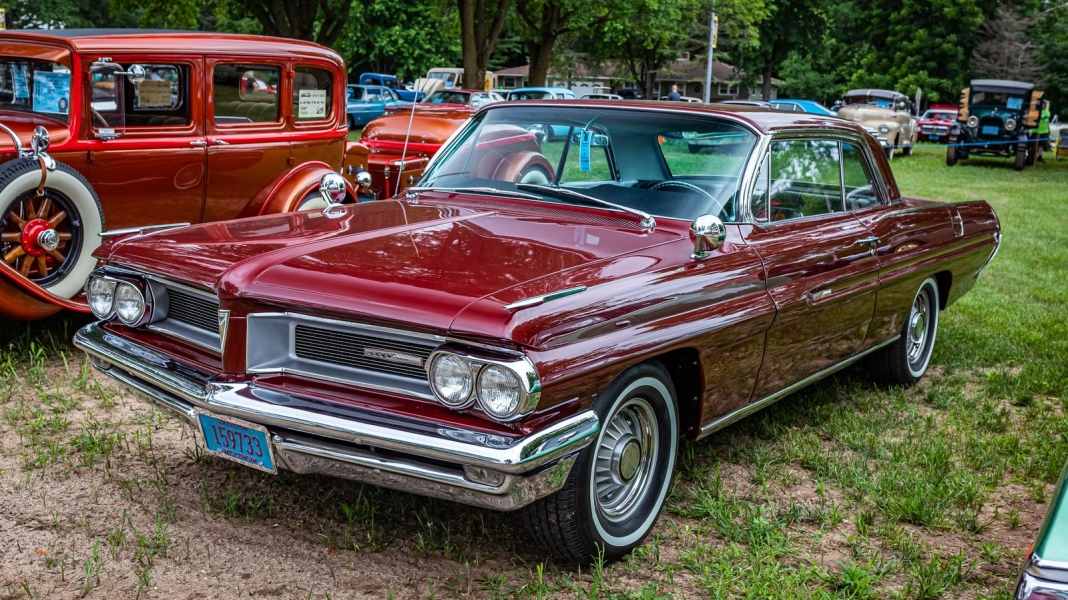The Grand Prix has been a staple in the automotive world for over forty years, captivating enthusiasts with its blend of style, performance, and innovation. Among the many engines that have powered this iconic vehicle, one in particular has earned a reputation for its sheer horsepower. But there’s a catch—this powerhouse comes with an asterisk.
What Makes This Engine Stand Out?
When we talk about horsepower in the context of the Grand Prix, the conversation often leads to the legendary 3.8-liter supercharged V6 engine. This beast, found in the Pontiac Grand Prix GTP models of the late ’90s and early 2000s, is often hailed as the highest horsepower engine ever installed in a Grand Prix straight from the factory. With an impressive output of around 240 horsepower, it was a game-changer for the brand and for muscle car enthusiasts alike.
But here’s where that asterisk comes into play. While the 3.8-liter V6 was indeed a powerhouse, it was also a product of its time, designed for a specific market that craved speed and performance without sacrificing everyday usability. This engine was not just about raw power; it was about delivering a thrilling driving experience while still being practical for daily commutes.
Why Does Horsepower Matter?
Horsepower is often the first metric enthusiasts look at when evaluating a car’s performance. It’s a straightforward way to gauge how much power an engine can produce, which directly impacts acceleration and overall driving dynamics. However, it’s essential to remember that horsepower is just one piece of the puzzle. Torque, weight, and aerodynamics all play crucial roles in how a car performs on the road.
In the case of the Grand Prix, the combination of the supercharged V6 and its relatively lightweight design allowed it to deliver exhilarating acceleration. This made it a popular choice among drivers who wanted a sporty feel without stepping into a full-blown sports car.
Real-World Performance: What Drivers Experienced
Drivers who got behind the wheel of the Grand Prix GTP often rave about the engine’s responsiveness and the thrill of the supercharger kicking in. The feeling of that extra boost when you hit the gas is something that many remember fondly. It’s not just about the numbers; it’s about the experience.
Take, for instance, a weekend road trip where a driver finds themselves on a winding mountain road. The Grand Prix’s handling, combined with that supercharged power, transforms an ordinary drive into an unforgettable adventure. It’s moments like these that make the horsepower figure feel less like a statistic and more like a promise fulfilled.
The Legacy of the Grand Prix Engine
As automotive technology has evolved, so has the Grand Prix. While newer models have embraced turbocharging and hybrid technology, the legacy of that supercharged V6 still resonates with fans. It represents a time when American muscle was about more than just numbers; it was about the thrill of driving and the joy of performance.
Today, enthusiasts often seek out older Grand Prix models, not just for their nostalgic value but for the unique driving experience they offer. The sound of that supercharged engine, the feel of the steering wheel, and the rush of acceleration are all part of what makes the Grand Prix special.
What’s Next for Performance Cars?
As we look to the future, the automotive landscape is changing rapidly. With the rise of electric vehicles and advancements in hybrid technology, the definition of performance is evolving. While horsepower will always be a critical factor, the focus is shifting toward efficiency and sustainability.
However, the spirit of performance cars, as embodied by the Grand Prix and its iconic engine, will always hold a special place in the hearts of car lovers. It’s a reminder that while technology may change, the joy of driving remains timeless.
The big takeaway? Horsepower isn’t just about the numbers; it’s about the experience behind the wheel. Whether you’re a fan of classic muscle or modern performance, there’s always something to appreciate in the world of cars. So, why not take a moment this week to explore a new driving experience? You might just discover a new favorite ride.


